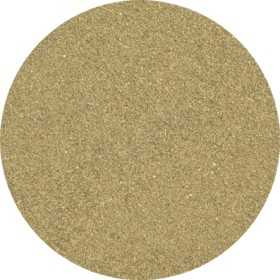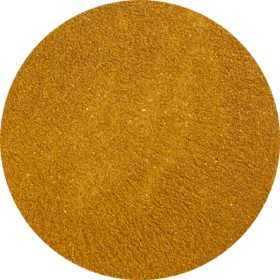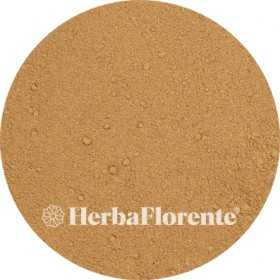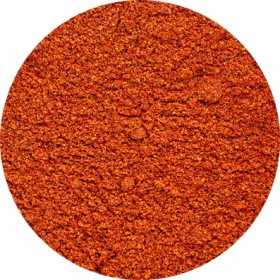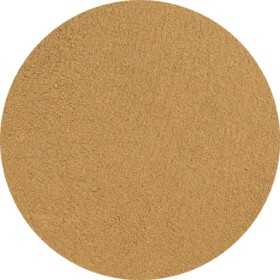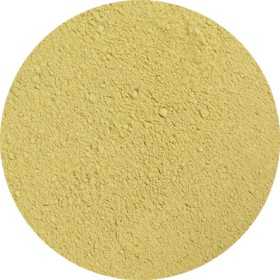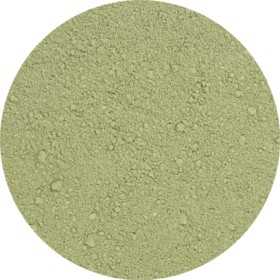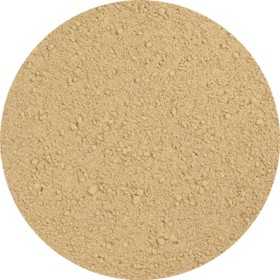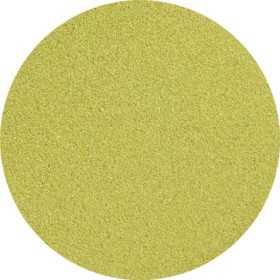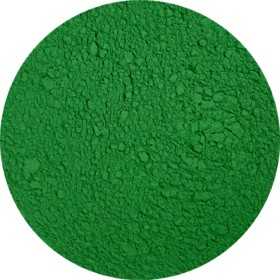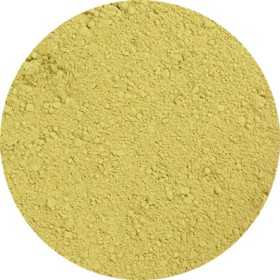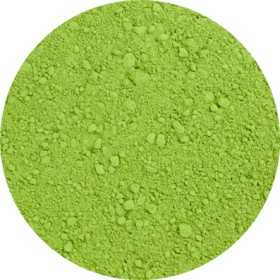P, Q, R, S, T
There are 15 products.
Bitterhout - Quassiae
Quassia, known in Surinamese as kwasibita, is the heartwood of the Quassia amara, a plant species from the Quassia genus within the Tree of Heaven family. This South American plant is often planted in the tropics for its use as a remedy for malaria.
Quassia amara is a small, evergreen shrub found in tropical South America, particularly the Guianas, northern Brazil and Venezuela. The plant grows in the understory of the rainforest and its striking red flowers are pollinated by hummingbirds. Because of these beautiful flowers, the plant is also often planted for decorative purposes.
Quassia amara is a small, evergreen shrub found in tropical South America, particularly the Guianas, northern Brazil and Venezuela. The plant grows in the understory of the rainforest and its striking red flowers are pollinated by hummingbirds. Because of these beautiful flowers, the plant is also often planted for decorative purposes.
€2.80
From: €2.80
Black Pepper - Piper nigrum
Pepper is a commonly used spice in cooking, known for its sharp taste. It is obtained from the berries of the tropical pepper plant, Piper nigrum. The pungency of black peppercorns comes from the component piperine. Pepper comes in different colors, including black, white and green.
It can be used in virtually any dish and enhances the flavor of meat while adding a spicy note to soups and purees. Sometimes pepper is also used in baking products, such as gingerbread, albeit in moderate amounts. Whole peppercorns, dried berries of the pepper plant, are used in some dishes. Although pepper is also available ground, many gourmets prefer freshly ground pepper. In addition, pepper is also often used fresh. In India, pepper is added to the spiciest curry mixtures.
It can be used in virtually any dish and enhances the flavor of meat while adding a spicy note to soups and purees. Sometimes pepper is also used in baking products, such as gingerbread, albeit in moderate amounts. Whole peppercorns, dried berries of the pepper plant, are used in some dishes. Although pepper is also available ground, many gourmets prefer freshly ground pepper. In addition, pepper is also often used fresh. In India, pepper is added to the spiciest curry mixtures.
€3.00
From: €3.00
Clove - Syzygium aromaticum
Clove (Syzygium aromaticum) is the dried, fragrant flower bud of the clove tree. The main active ingredient is eugenol, which also promotes the antioxidant properties of cloves. Clove is known for its antioxidant effect and supports healthy digestion. In addition, it improves blood circulation and soothes the throat.
€3.10
From: €3.10
Dandelion (Herb & Root) - Taraxum officinale
Dandelion (Taraxacum officinale) has been known for centuries for its ability to support liver and gallbladder function. Both the root and the above-ground parts of the plant are rich in nutrients. In addition, dandelion has a beneficial effect on digestion.
The rich nutritional value of dandelions makes it advisable to regularly pick some fresh leaves in the wild and add them to salads. They are especially tasty in the spring. The fresh yellow flowers can be used as a cheerful decoration in salads and dried they can be processed into a 'wild' herbal tea.
Dandelions contain a high level of bitter substances, which always indicates that they are beneficial for liver and gallbladder function.
The rich nutritional value of dandelions makes it advisable to regularly pick some fresh leaves in the wild and add them to salads. They are especially tasty in the spring. The fresh yellow flowers can be used as a cheerful decoration in salads and dried they can be processed into a 'wild' herbal tea.
Dandelions contain a high level of bitter substances, which always indicates that they are beneficial for liver and gallbladder function.
€2.40
From: €2.40
Geranium - Pelargonium sidoides
The Cape geranium, also known as Pelargonium sidoides, is a South African geranium species that has been part of indigenous herbal lore for centuries. The locals call it 'umckaloabo'. This plant thrives in the wild among tall grass and aromatic flower beds on the slopes of the Cape coast. It has soft, velvety gray-green leaves and deep magenta-colored flowers. The dried and ground rhizomes are dark red in color. They have a soothing effect on the airways and are therefore suitable for providing support for airway problems.
€5.00
From: €5.00
Magnolia Berry (Schisandra) - Schisandrae chinensis
Schisandra, also known as the Schisandra berry (Schisandra chinensis), is known as one of the most important herbs in traditional Chinese medicine for promoting energy and vitality, and reducing stress. This dark red berry is rich in antioxidants, strengthens the immune system and promotes overall vitality. In addition, it provides protection and support to the liver and respiratory tract.
Schisandra has been used in traditional Chinese herbal medicine for over 2000 years. Only the berry with its seeds are used, harvested after the first frost and then dried in the sun. Schisandra is known as one of the most important herbs for promoting vitality.
Schisandra has been used in traditional Chinese herbal medicine for over 2000 years. Only the berry with its seeds are used, harvested after the first frost and then dried in the sun. Schisandra is known as one of the most important herbs for promoting vitality.
€7.50
From: €7.50
Milk Thistle (Seed) - Sylibum marianum, Cardui Mariae
Milk thistle (Silybum marianum), also known as milk thistle or milk thistle, is a spiny plant native to the Mediterranean region, but which also grows in our area. It belongs to the composite family. Milk thistle has been used for centuries as a natural remedy to support liver and bile function. It can be used as part of a cleansing regimen to assist the liver in the detoxification process.
The seeds of milk thistle contain silymarin, a powerful antioxidant. Silymarin stimulates the liver in the natural detoxification process and thus supports liver function.
The seeds of milk thistle contain silymarin, a powerful antioxidant. Silymarin stimulates the liver in the natural detoxification process and thus supports liver function.
€2.00
From: €2.00
Pau D'arco - Tabeuiae
Pau d'arco (Tabebuia avellanedae) is an imposing tree that thrives in the Amazon rainforest. The bark of the pau d'arco has been used for centuries in traditional herbal medicine for its diverse uses, including its supportive effects on the immune system.
The inner layer of the bark of Tabebuia avellanedae is packed with flavonoids, powerful antioxidants that protect our bodies against oxidative damage caused by free radicals. In addition, it contains a significant amount of quinones. More than 20 quinone compounds have already been discovered in the bark of the pau d'arco, such as lapachol and beta-lapachone. In addition, the bark contains substances that help defend against unfavorable bacteria and fungi.
The inner layer of the bark of Tabebuia avellanedae is packed with flavonoids, powerful antioxidants that protect our bodies against oxidative damage caused by free radicals. In addition, it contains a significant amount of quinones. More than 20 quinone compounds have already been discovered in the bark of the pau d'arco, such as lapachol and beta-lapachone. In addition, the bark contains substances that help defend against unfavorable bacteria and fungi.
€2.60
From: €2.60
Red Clover - Trifolii Rubr. pratense
Red clover (Trifolium pratense) grows naturally in Europe and Central Asia. Usually the leaves of red clover have three parts and a light purple flower blooms in the middle. In addition to the high content of isoflavones, which are bioactive substances that fall under polyphenols, the flower heads of red clover are also rich in vitamin C, B1, B2, B3, beta-carotene and choline.
Red clover can help with menopausal symptoms such as hot flashes, mood swings and irritability. In addition, it supports heart health and contributes to the condition of the blood vessels. It can also be used to maintain strong bones.
Red clover can help with menopausal symptoms such as hot flashes, mood swings and irritability. In addition, it supports heart health and contributes to the condition of the blood vessels. It can also be used to maintain strong bones.
€3.20
From: €3.20
Ribwort Plantain - Plantaginis lanceolata
Ribwort Plantain (Plantago lanceolata) is a native plant that thrives in Europe, parts of Asia, North Africa and North America. The young leaves of this plant contain a rich mix of beneficial substances, including mucilages, tannins, bitter substances, flavonoids and minerals such as potassium and zinc. Best known for its soothing effect on the throat thanks to its mucilages, plantain also provides support for the immune system and promotes normal intestinal function. In addition, it can help maintain flexible joints and is beneficial for the liver.
€2.40
From: €2.40
Rose Root - Rhodiola rosea
Out-of-Stock
Rose root (Rhodiola rosea) also known as the 'golden root', is a succulent plant that thrives in cold, rocky areas around the world. The roots emit a characteristic scent of roses. This herb has long been used in herbal medicine.
It contains protective antioxidants that help our body cells. Rose root supports both physical and mental balance in our body. It helps keep the mind clear, improves mood and promotes concentration. Some of the bioactive compounds in rose root include rosavine and salidroside, which are thought to be responsible for Rhodiola rosea's calming and uplifting effects.
It contains protective antioxidants that help our body cells. Rose root supports both physical and mental balance in our body. It helps keep the mind clear, improves mood and promotes concentration. Some of the bioactive compounds in rose root include rosavine and salidroside, which are thought to be responsible for Rhodiola rosea's calming and uplifting effects.
€20.00
From: €20.00
Rosemary - Rosmarini officinalis
Rosemary (Rosmarinus officinalis L.) is a fragrant, compact shrub belonging to the Lamiaceae family. This versatile herb has been used for centuries for various purposes, both culinary and for health promotion. Originally from Mediterranean regions, the Rosmarinus officinalis displays lush blooms in spring with small, lavender blue flowers.
The name "rosemary" has its origins in the Latin "ros" (roris), meaning "dew", and "marinus", meaning "sea": "dew of the sea". Since ancient times, by both the ancient Greeks and Romans, Rosmarinus officinalis has been valued for its health-supporting properties. It helps with digestion, strengthens the immune system and contains antioxidants.
The name "rosemary" has its origins in the Latin "ros" (roris), meaning "dew", and "marinus", meaning "sea": "dew of the sea". Since ancient times, by both the ancient Greeks and Romans, Rosmarinus officinalis has been valued for its health-supporting properties. It helps with digestion, strengthens the immune system and contains antioxidants.
€2.00
From: €2.00
Spirulina - Spirulina platensis
Spirulina, a type of algae, provides support to the immune system through its rich nutrients and relieves fatigue.
The blue-green spirulina is a type of algae that contains both chlorophyll (green pigment) and phycocyanin (blue pigment). These single-celled algae form spiral microscopic strands and thrive in warm, fresh water.
With its abundance of essential nutrients, spirulina is invaluable to our body. It contains more than 60% complete protein, almost three times more than beef, and is rich in vitamin B complex, vitamin E, carotenoids, iron, manganese, zinc and essential fatty acids such as gamma-linolenic acid. With ten different mixed carotenoids, spirulina is the most beta-carotene-rich food known.
The blue-green spirulina is a type of algae that contains both chlorophyll (green pigment) and phycocyanin (blue pigment). These single-celled algae form spiral microscopic strands and thrive in warm, fresh water.
With its abundance of essential nutrients, spirulina is invaluable to our body. It contains more than 60% complete protein, almost three times more than beef, and is rich in vitamin B complex, vitamin E, carotenoids, iron, manganese, zinc and essential fatty acids such as gamma-linolenic acid. With ten different mixed carotenoids, spirulina is the most beta-carotene-rich food known.
€2.50
From: €2.50
Thyme - Thymii vulgaris
Thyme (Thymus vulgaris L.) is not only a great seasoning in the kitchen, but also an ally for our health. This herb, recognizable by its characteristic smell, soothes the respiratory tract and promotes freer breathing. In addition, thyme supports digestion.
This herb grows wild in Europe, Asia and Africa and thrives in hardy shrubs about 40 centimeters high, even on dry and stony soils. Both the leaves and flowers of thyme contain active substances that benefit our health. The ancient Greeks and Romans already used real thyme to ease their breathing. Today, thyme is still used in licorice and syrups for its soothing effects on the respiratory tract.
This herb grows wild in Europe, Asia and Africa and thrives in hardy shrubs about 40 centimeters high, even on dry and stony soils. Both the leaves and flowers of thyme contain active substances that benefit our health. The ancient Greeks and Romans already used real thyme to ease their breathing. Today, thyme is still used in licorice and syrups for its soothing effects on the respiratory tract.
€2.20
From: €2.20
Wheatgrass - Triticum aestivum
Wheatgrass is a nutritious source of vitamins A, C and E, calcium, magnesium and iron. It also contains high concentrations of chlorophyll and natural enzymes. The crop even consists of 70% chlorophyll.
€2.00
From: €2.00
















